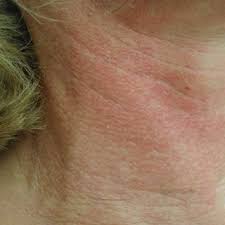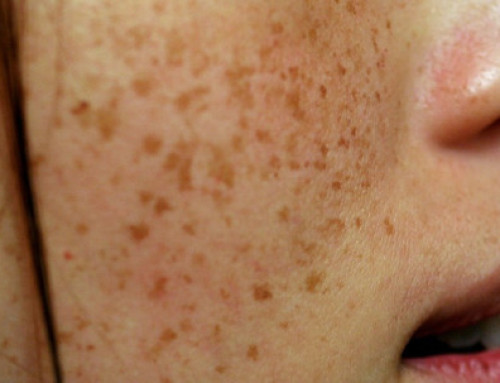
One of the most common questions I get asked by women over 40 is “How can I improve my neck and décolletage?”
Often these areas have been neglected in our youth. An overexposure to the elements and an under-exposure to skincare and sun care means the effects of ageing become apparent quickly.
In this blog post, we delve into the reasons why our necks become saggy and spotty, exploring the underlying biological and structural factors that contribute to this common concern.
Loss of Skin Elasticity.
One of the primary causes of a sagging neck is the natural loss of skin elasticity that occurs with age. Our skin contains elastin fibers, which are responsible for maintaining its firmness and flexibility. However, as we grow older, the production of elastin decreases, leading to a gradual loss of elasticity. This loss results in the skin becoming lax, leading to sagging and wrinkling.
Collagen, a structural protein found abundantly in our skin, plays a crucial role in maintaining its strength and firmness. Unfortunately, as we age, the production of collagen diminishes, and existing collagen fibers start to break down. This collagen depletion contributes to the loss of skin’s supportive framework, causing the skin to sag. The neck area is particularly prone to collagen breakdown, resulting in visible signs of aging.
Treatments available focus on “Collagen Induction” and include Skin Needling, Radio Frequency and Plasma Fibroblast Treatments and will improve your neck and decolletage.

Fat Distribution.
Age-related changes also affect the distribution of fat and volume in the face and neck. As we get older, fat deposits that provide structural support and a youthful appearance tend to diminish. This loss of fat can result in hollowing and a sunken appearance in the neck area, accentuating the appearance of sagging skin. Additionally, the loss of underlying fat can make the neck more susceptible to the effects of gravity, exacerbating the sagging.
Another factor that contributes to sagging necks is the weakening of muscles and ligaments in the neck region. The platysma muscle, responsible for supporting and lifting the neck, can lose its tone over time. Similarly, the ligaments that hold the skin and underlying structures in place can become stretched and weakened. As a result, the neck muscles and ligaments fail to provide adequate support, leading to sagging and the appearance of vertical bands or “turkey neck.”
Trials in microcurrent are looking promising to support this condition. Although surgery is still considered the most effective treatment.
Culminative Sun Damage.
To improve your neck and decolletage, pigmentation reduction is usually the first step.
Excessive sun exposure over the years can significantly contribute to the sagging of the neck. The ultraviolet (UV) radiation in sunlight damages the collagen and elastin fibers in the skin, leading to accelerated aging. UV rays also break down the skin’s natural moisture barrier, causing dehydration and further compromising the skin’s elasticity.
The neck and decolletage often bear the brunt of sun damage, resulting in uneven skin tone, redness and pigmentation.
Pigmentation caused by sun damage is best treated with IPL/Laser Rejuvenation.
These light based treatments produce immediate results although the treatment is a little uncomfortable.


Poikiloderma of Civatte is a common and chronic condition that occurs on the sides of the neck and is a combination of symptoms. The term ‘poikiloderma’ refers to a skin cell degeneration where hypopigmentation, (white spots) hyperpigmentation (brown spots) and dilation of the fine blood vessels (telangiectasia) present.
This is mostly found in fairer skinned women who are post menopausal.
Once again IPL / Laser Rejuvenation treatments are the best option.
Although a difficult condition to treat, I have had great success with a series of IPL treatments. Three to four treatments to treat the redness and two to three treatments to treat the brown pigmentation. Unfortunately, there is no treatment for hypopigmentation (white spots) at this stage.
Skin Tags.
Skin Tags, are common the neck and usually found in spots where the skin creases and rubs.
They are small growths on the skin and connected to the skin by a small, thin stalk.
Skin tags are not harmful but some clients find them unsightly.
They are easily removed and we find that burning the tag with a Plasma Pen device is the treatment that produces the least scarring.

Home Care Solutions for Neck and Decolletage
Of course, prevention is better than a cure.
What you use on your face is also what you should use on your neck and decolletage.
In particular, daily sunscreen, topical retinoids and a great moisturiser.


